 Two Soay Lambs on the island of Hirta
Two Soay Lambs on the island of Hirta
Heading into the last week before the big ran and craft show at the Coburg Town hall, organized by the handknitters crocheters guild Victoria.
It is hectic, busy, and every waking second is used to spin, label, dye, skein and pack, so not a lot of time to post a lot of fluff and yarn on social media I’m afraid. This is only because of a lack of time not because of a lack of fluff and yarn which will be on offer at the show. You can be sure of that !
The whole house is starting to fill up with tubs of finished products ready for the show or drying racks and packing benches filled with yarns and fluff waiting to get their final labeling and skeining done.
Next week is a about finishing the last of some super luxurious rare breed handspun yarns: pure snow mink, guanaco, guanaco and alpaca, angora bunny and wallaby, Qiviut, vampire deer and more.
On tonight’s blog I have something special for you planned.
Here is the story about a magical place and a magical breed: the Soay sheep from St Kilda and Hirta.
Anyone lucky enough to land on the main island of Hirta will not have to travel more than a few footsteps to see the ancient breed of Soay sheep; they roam free throughout the whole island, from Village Bay to the top of the hills and into the Gleann Mòr, and on the precipitous green slopes and ledges of the island’s huge cliffs. Although Soay is separated from Hirta by a channel only five hundred metres wide, the Soay sheep population on Hirta is a very recent chapter in the history of these remarkable animals.

The records show that the islanders kept a different breed of domestic sheep. In the mid- nineteenth century the Hebridean blackface was introduced. These animals were a cross between the Scottish Tan Face and the Scottish Blackface. They were larger than the Soay and grew creamy white wool coats. The tenant islanders kept their sheep on Hirta and Boreray, whilst the Soay sheep, which belonged to the proprietor, lived separately on their native isle of Soay. The islanders frequently went there for fowling and to roo (pluck) the Soay wool in summer. When the islanders were evacuated in 1930, their sheep on Hirta were gathered and transported to the mainland and sold by Government order with the intention of defraying the costs of the evacuation. Their sheep on Boreray were left behind and became feral; this tiny flock are now known as the Boreray breed and are the last genetic remnant of the now extinct Scottish Tan Face.
The Soay sheep fared better than the Boreray when their territory was expanded to include Hirta. In 1931 Macleod of Macleod sold the archipelago to Lord Dumfries and the new proprietor had different plans for his new possessions. These included transferring enough Soay sheep to Hirta to start another flock to graze the now empty land. This was easier said than done as it involved carrying sheep down the vertical cliffs of Soay to a small boat in heaving seas. It is no surprise that the new laird had to call on expert cragsmen from Hiort to get this job done and they boarded the SS Hebrides and sailed from Harris to Hiort in June 1932. They cleaned out their old homes and stayed throughout the summer whilst they transferred one hundred and seven sheep across the Sound of Soay to Hirta. Soay itself has no safe landing point and is out of bounds to unauthorised visitors. The Soay sheep that graze in Village Bay are wild animals but are now well-used to humans wandering around the village and it is possible to get very close to them.

You only need to take a walk around Village Bay in order to see the different types within the pedigree breed. The classic Soay sheep is known as the Dark Wild type, having a dark brown body with a light belly and rump and light hair around the eyes. There is also a Dark Self which is a uniform dark brown. The Light Wild has the same light areas as the Dark Wild but with a pale fawn coloured body. There is also a small proportion that have variable amounts of white on their bodies. They shed their fleeces naturally in the summer and are not prone to the problems of flystrike as domestic breeds are when left unsheared.

An annual sheep count has taken place most years since 1952 and these counts reveal that the sheep on Hirta have unusual population dynamics: the population rises to near maximum and then crashes at irregular intervals. Crashes can produce a mortality rate of as much as 70% of the population. These crashes have been of great interest to ecologists and the first phase of ecological research into the population dynamics began in 1959 when some sheep were tagged in order to follow the course of their lives. Though the research was ahead of its time, when it ended in 1967 the causes of the crashes were still unclear.
In 1985 further intensive research began when ecologists from Cambridge University tagged all of the sheep in Village Bay. This meant that the lives of each individual animal could be followed. The causes of the crashes are now known. Briefly, the population dynamics are the result of almost all mature ewes conceiving and lambing successfully each year regardless of flock density. This means that the population can rise to a degree well beyond the winter carrying-capacity of the island. Particularly severe winters combined with a high proportion of vulnerable lambs and males make a crash most likely.

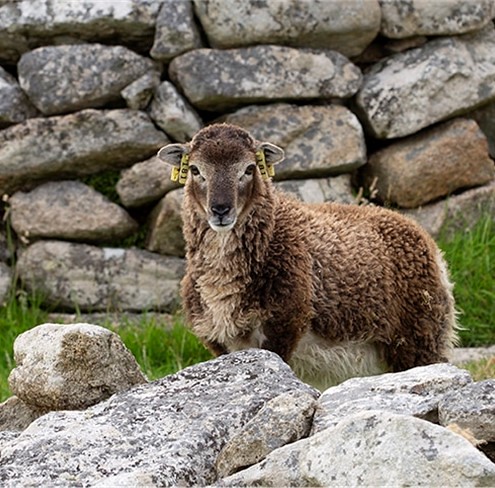

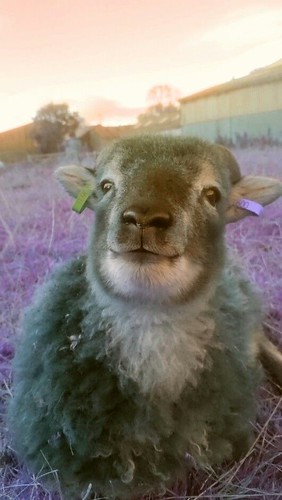 a smiling soay lamb
a smiling soay lamb
Here is some more in depth information about the islands and the sheep
The Isle of Soay, a name derived from the Norse word for Sheep Island, is near the North West corner of Hirta. A very dangerous, narrow channel and sea stacks separate the two. Soay is extremely difficult to access due to its steep rocky cliffs, boulder fields and lack of anchorage.
It can only be approached when seas are very calm and quickly changing weather can make getting off the island nearly impossible, it is the least accessible of all the islands in the archipelago. It is believed that sheep have probably inhabited Soay since the Bronze Age and are the descendants of the very first domesticated sheep which populated northern Europe. They are the most primitive surviving livestock breed in the UK.
The sheep on Soay Island were not owned by the St. Kildans of Hirta, but instead by the islands various lairds (landlords). Their feudal tenants were allowed to annually collect fleece from these sheep and were occasionally permitted to take an animal, for a fee, to kill for special occasions. While Soay is somewhat larger (244 acres) than its neighbour Boreray (189 acres) Soay supports fewer animals per acre because its high central plateau is a marshy bog with little vegetation suitable to grazing sheep.
Here is some amazing footage of St Kilda Island and its Soay sheep (the sheep story arrives at around 5mins30secs in)
The animals on Soay have never been managed and lived feral on the island for thousands of years, no one is certain how long or how they got there.
There are dark and blond sheep with some ewes being horned and many others polled (no horns) or scurred (small or misshaped horns). Over recent centuries some animals have been taken from Soay to estates on the mainland of the UK. Over a period of time starting in 1932, after St. Kilda had been evacuated and sold, 107 animals were captured and transferred to the vacant pastures of Hirta.
This was a significant number taken from the small population on Soay Island. Today flocks survive in both locations.
Visitors to St Kilda will immediately notice three striking features of the sheep.
First, Soay sheep are tiny. In August, mature females average around 24kg in weight while mature males are around 38kg, making them about one third the size of most modern domestic sheep and shrinking !

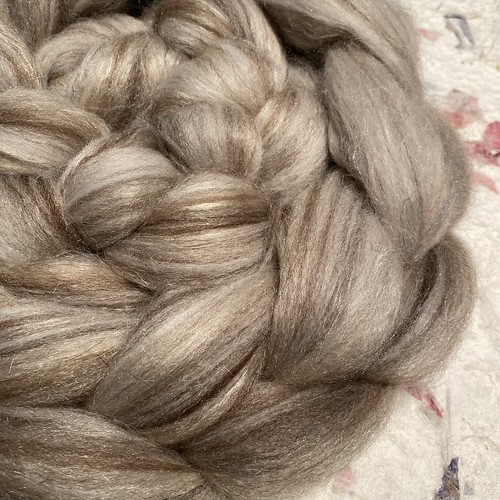
In 1985 further intensive research began when ecologists from Cambridge University tagged all of the sheep in Village Bay. This meant that the lives of each individual animal could be followed. The causes of the crashes are now known. Briefly, the population dynamics are the result of almost all mature ewes conceiving and lambing successfully each year regardless of flock density. This means that the population can rise to a degree well beyond the winter carrying-capacity of the island. Particularly severe winters combined with a high proportion of vulnerable lambs and males make a crash most likely.



The Soay Sheep Project is the longest-running Large Mammal Research Project ever conducted. Important detailed research is ongoing and is run by Edinburgh University and Imperial College London along with other participating bodies. The lambs in Village Bay have been tagged every year since 1985 and a huge amount of data has been gathered, allowing valuable findings regarding population ecology, evolution, genetics, vegetation, climate change, parasites, immunology and ageing.
All of the research is fascinating, not least that of ageing. Soay sheep are in their prime from age 2 to 6 years. Beyond that they decline annually in fitness but they have been found to do so at notably varying rates and in different ways. Finding the reasons why individual Soay sheep differ in when and how they age, and how genes and environment affect the process, will be invaluable in understanding the reasons for variations in lifespan of mammals living in complex environments.
All of the research is fascinating, not least that of ageing. Soay sheep are in their prime from age 2 to 6 years. Beyond that they decline annually in fitness but they have been found to do so at notably varying rates and in different ways. Finding the reasons why individual Soay sheep differ in when and how they age, and how genes and environment affect the process, will be invaluable in understanding the reasons for variations in lifespan of mammals living in complex environments.
 a smiling soay lamb
a smiling soay lamb Here is some more in depth information about the islands and the sheep
The Isle of Soay, a name derived from the Norse word for Sheep Island, is near the North West corner of Hirta. A very dangerous, narrow channel and sea stacks separate the two. Soay is extremely difficult to access due to its steep rocky cliffs, boulder fields and lack of anchorage.
It can only be approached when seas are very calm and quickly changing weather can make getting off the island nearly impossible, it is the least accessible of all the islands in the archipelago. It is believed that sheep have probably inhabited Soay since the Bronze Age and are the descendants of the very first domesticated sheep which populated northern Europe. They are the most primitive surviving livestock breed in the UK.
The sheep on Soay Island were not owned by the St. Kildans of Hirta, but instead by the islands various lairds (landlords). Their feudal tenants were allowed to annually collect fleece from these sheep and were occasionally permitted to take an animal, for a fee, to kill for special occasions. While Soay is somewhat larger (244 acres) than its neighbour Boreray (189 acres) Soay supports fewer animals per acre because its high central plateau is a marshy bog with little vegetation suitable to grazing sheep.
.jpg) |
| the Island of sheep |
St. Kilda is a group of islands which are the most westerly part of Scotland; they are 41 miles from Benbecula in the Outer Hebrides and 110 miles from the Scottish mainland.
This archipelago consists of four small islands and some large rocky outcrops which are all that remains of a long extinct volcano. The islands are remote and spectacular with the highest cliffs in the UK and are the home to large colonies of seabirds.
There is evidence that the main island Hirta has been inhabited for thousands of years but the habitation might not have been continuous. There is also evidence of human activity on the other three islands of Dun, Soay and the more remote Boreray.
The island of Soay has been the home of the most primitive form of domestic sheep in the UK for thousands of years which have remained as a relic of early domestication due to isolation and inaccessibility. The islanders, known as the St. Kildans were the tenants of various owners of St. Kilda, they had limited resources other than the vast seabird colonies. They caught thousands of these birds and used their feathers and extracted their oil as a currency to pay their rent and to buy meagre provisions.
The most remote island of the archipelago is Boreray which was used by the St. Kildans to harvest sea birds and their eggs and also keep a reserve flock of their unique domestic sheep, now known as Boreray Sheep.
As more communications with the mainland improved the life of the islanders changed, they were subject to diseases brought by contact with outsiders which caused heavy mortality. There was movement to the mainland and immigration to other parts of the world until in 1930 the population became so low with so few able bodied men they could no longer sustain themselves and they chose to leave. In 1957, the entire archipelago was bequeathed to the National Trust for Scotland and has been in their ownership and protection ever since.
This archipelago consists of four small islands and some large rocky outcrops which are all that remains of a long extinct volcano. The islands are remote and spectacular with the highest cliffs in the UK and are the home to large colonies of seabirds.
There is evidence that the main island Hirta has been inhabited for thousands of years but the habitation might not have been continuous. There is also evidence of human activity on the other three islands of Dun, Soay and the more remote Boreray.
The island of Soay has been the home of the most primitive form of domestic sheep in the UK for thousands of years which have remained as a relic of early domestication due to isolation and inaccessibility. The islanders, known as the St. Kildans were the tenants of various owners of St. Kilda, they had limited resources other than the vast seabird colonies. They caught thousands of these birds and used their feathers and extracted their oil as a currency to pay their rent and to buy meagre provisions.
The most remote island of the archipelago is Boreray which was used by the St. Kildans to harvest sea birds and their eggs and also keep a reserve flock of their unique domestic sheep, now known as Boreray Sheep.
As more communications with the mainland improved the life of the islanders changed, they were subject to diseases brought by contact with outsiders which caused heavy mortality. There was movement to the mainland and immigration to other parts of the world until in 1930 the population became so low with so few able bodied men they could no longer sustain themselves and they chose to leave. In 1957, the entire archipelago was bequeathed to the National Trust for Scotland and has been in their ownership and protection ever since.
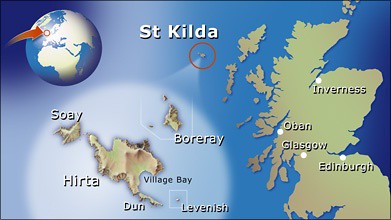 |
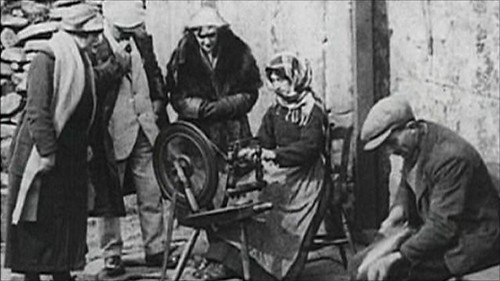 |
| Tourists flocking around a spinner showing them spinning soay (1900s) |
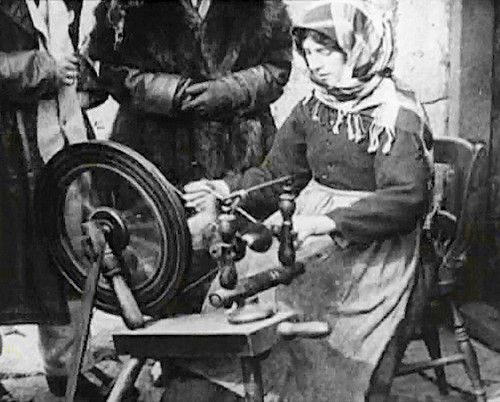 |
| close up |
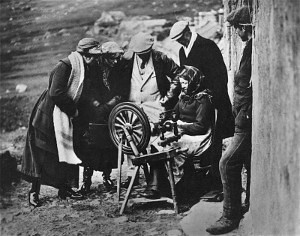 |
| spinning magic |
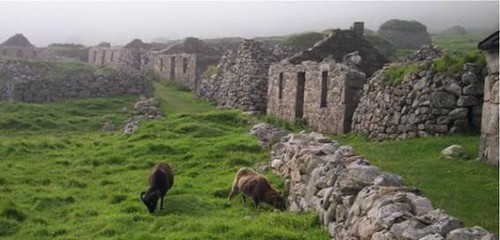 |
| now the same street is deserted... except for the grazing soay sheep that have been there for centuries |
Here is some amazing footage of St Kilda Island and its Soay sheep (the sheep story arrives at around 5mins30secs in)
There are dark and blond sheep with some ewes being horned and many others polled (no horns) or scurred (small or misshaped horns). Over recent centuries some animals have been taken from Soay to estates on the mainland of the UK. Over a period of time starting in 1932, after St. Kilda had been evacuated and sold, 107 animals were captured and transferred to the vacant pastures of Hirta.
This was a significant number taken from the small population on Soay Island. Today flocks survive in both locations.
Visitors to St Kilda will immediately notice three striking features of the sheep.
First, Soay sheep are tiny. In August, mature females average around 24kg in weight while mature males are around 38kg, making them about one third the size of most modern domestic sheep and shrinking !
 |
Second, they are highly variable in appearance. While many Soays have the ‘classic’ Soay coat colour, which we call ‘dark wild’ (with ‘wild’ being short for ‘wildtype’ the coat pattern that features a light belly and rump patch), we recognise three other varieties (‘dark self’, ‘light wild(type)’ and ‘light self’ (where ‘self’ refers to ‘self-coloured’ – a coat pattern with the same colour all over including belly and rump patch).
Studies have shown that the dark/light colouration is due to a gene called tyrosinase-related protein 1, or TYRP1 which is on sheep chromosome 2 and genetically dark is dominant to light, while the wild/self colouration is due to the locus Agouti on sheep chromosome 13 and wild is dominant to self.
There are however, very cute Soay sheep with white patches as well. (note: in angora rabbits for example there is the agouti on chromosome 13 as well, making the off spring able to have all different colours. Agouti is a gorgeous thing to have in the gene pool !).
Studies have shown that the dark/light colouration is due to a gene called tyrosinase-related protein 1, or TYRP1 which is on sheep chromosome 2 and genetically dark is dominant to light, while the wild/self colouration is due to the locus Agouti on sheep chromosome 13 and wild is dominant to self.
There are however, very cute Soay sheep with white patches as well. (note: in angora rabbits for example there is the agouti on chromosome 13 as well, making the off spring able to have all different colours. Agouti is a gorgeous thing to have in the gene pool !).
 |
The University of Edinburgh is doing a lot of research on these soay sheep because it offers them a very good insight in the ecology and the evolution of the species. A count of the whole of Hirta’s Soay sheep population has been conducted most years since 1952 by the same method.
It was these counts that revealed that Soay sheep on St Kilda have rather unusual population dynamics. The Soay population rises to maxima and then crashes, at irregular intervals. It is this population dynamic behaviour that makes Soay sheep so interesting for ecologists. The sheep exhibit a phenomenon known as overcompensatory density dependence, in which their population never reaches equilibrium.
The population growth is so great as to exceed the carrying capacity of the island, which eventually causes a dramatic population crash, and then the cycle repeats. For example, in 1989, the population fell by two thirds within 12 weeks !!
In brief, it became clear that the population dynamics of Soay sheep happen because virtually all mature females conceive each year, regardless of density, and as a result, the population can increase in one breeding season to a size which greatly exceeds the winter carrying capacity, when it may crash. Crashes are more likely to occur when there is bad winter weather, and when the population contains a large proportion of vulnerable sheep such as lambs and males. The population then increases again, over several years, before another crash.
As ecological research proceeded, it became clear that the Soay sheep population also offers remarkable opportunities for understanding the progress of natural selection and evolution in real time. Population crashes are a period of intense selection, could they have anything to do with the maintenance of genetic variation, for example in coat colour and horn type? Does the low life expectancy of most individuals select for early reproductive effort? Likewise, the population dynamics research inspires numerous questions about the relationship between the sheep and their biotic environment, including the plants on which they feed and the parasites.
The Soay sheep have short tails and naturally shed their wool, which can be hand plucked (called rooing) in the spring and early summer. About one kilogram of wool can be obtained from each animal per year.
It was these counts that revealed that Soay sheep on St Kilda have rather unusual population dynamics. The Soay population rises to maxima and then crashes, at irregular intervals. It is this population dynamic behaviour that makes Soay sheep so interesting for ecologists. The sheep exhibit a phenomenon known as overcompensatory density dependence, in which their population never reaches equilibrium.
The population growth is so great as to exceed the carrying capacity of the island, which eventually causes a dramatic population crash, and then the cycle repeats. For example, in 1989, the population fell by two thirds within 12 weeks !!
In brief, it became clear that the population dynamics of Soay sheep happen because virtually all mature females conceive each year, regardless of density, and as a result, the population can increase in one breeding season to a size which greatly exceeds the winter carrying capacity, when it may crash. Crashes are more likely to occur when there is bad winter weather, and when the population contains a large proportion of vulnerable sheep such as lambs and males. The population then increases again, over several years, before another crash.
As ecological research proceeded, it became clear that the Soay sheep population also offers remarkable opportunities for understanding the progress of natural selection and evolution in real time. Population crashes are a period of intense selection, could they have anything to do with the maintenance of genetic variation, for example in coat colour and horn type? Does the low life expectancy of most individuals select for early reproductive effort? Likewise, the population dynamics research inspires numerous questions about the relationship between the sheep and their biotic environment, including the plants on which they feed and the parasites.
The Soay sheep have short tails and naturally shed their wool, which can be hand plucked (called rooing) in the spring and early summer. About one kilogram of wool can be obtained from each animal per year.
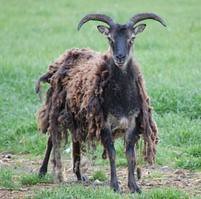 |
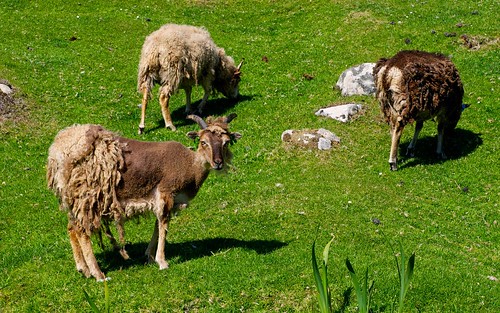 Soay sheep shed their fleece leaving them to look a bit bedraggled |
This breed has extremely fine fleece and it is difficult to distinguish an outer coat. This is a clear indication that the Soay are indeed the product of a domesticated breed in prehistoric times.
The breed also lacks the flocking instinct of many breeds. Attempts to work them using sheep dogs result in a scattering of the group: no use entering them at the Bendigo sheep and wool show dog trials: it would be extremely frustrating for the sheep and dogs. They obviously are the rebels among sheep !
The breed also lacks the flocking instinct of many breeds. Attempts to work them using sheep dogs result in a scattering of the group: no use entering them at the Bendigo sheep and wool show dog trials: it would be extremely frustrating for the sheep and dogs. They obviously are the rebels among sheep !
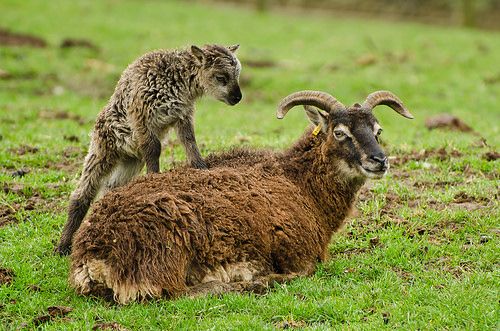 |
| A Soay lamb and his mum |
 |
| a one day old Soay sheep lamb blending in with some autumn leaves |
 |
| Soay sheep fleece |
Please don't hesitate to contact me at any time if you have any questions okay? Always happy to enable. All my contact details are to be found at the end of this week’s blog entry. Have fun !!!
IxCHeL Outlander Tops
Scottish Soay Sheep , super fine Merino, Muga silk , Mulberry Silk, Cashmere, Angora bunny
100+gram top AU$27


Natural
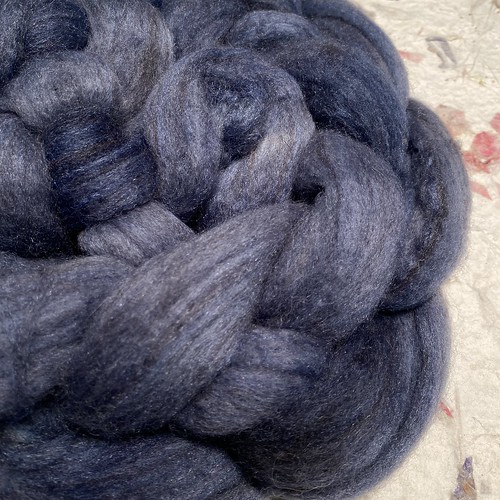
 |

Night Sky (dyed with Indigo). SOLD
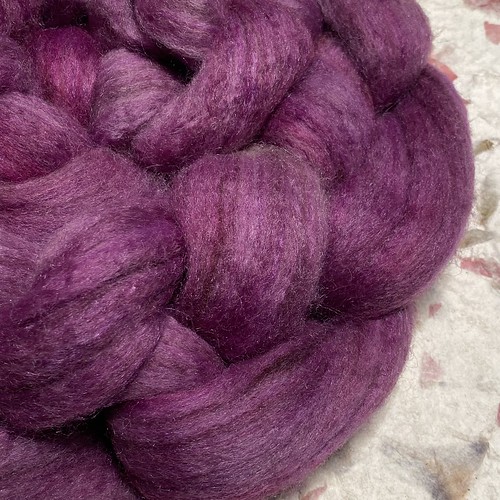
 |

Thistle Flowers SOLD

 |

Scottish Rose (dyed with Madder Root) sold
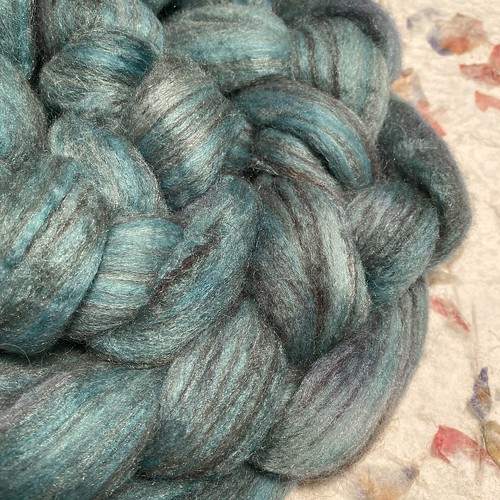
 |

Freezing in a Kilt (Dyed with homegrown woad) sold

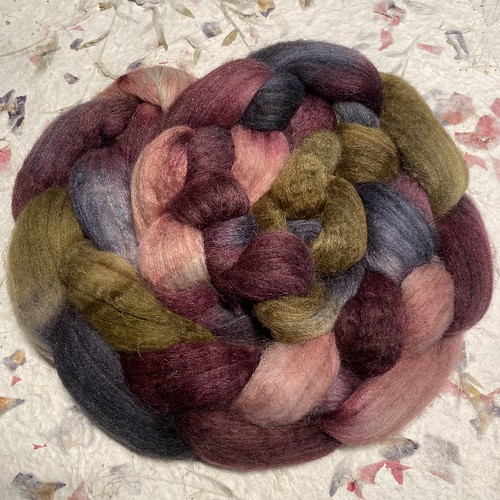 |

Highland Dreams. Sold

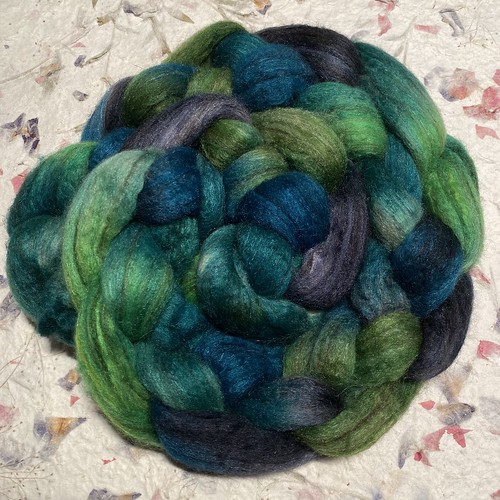 |

Loch Ness Dragon. SOLD

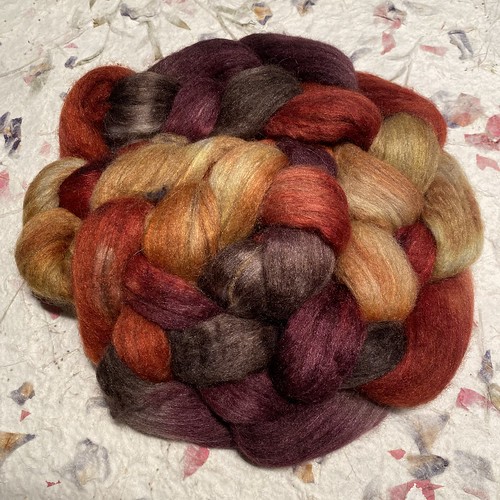 |

Dragonfly in Amber. 1 left

 |

Night sky over Inverness Sold

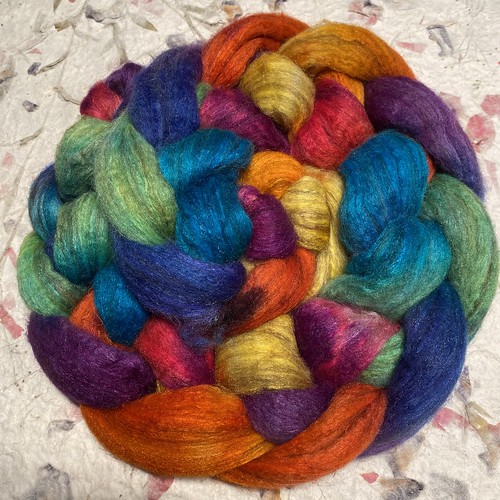 |

Rainbow Magic. 1 left


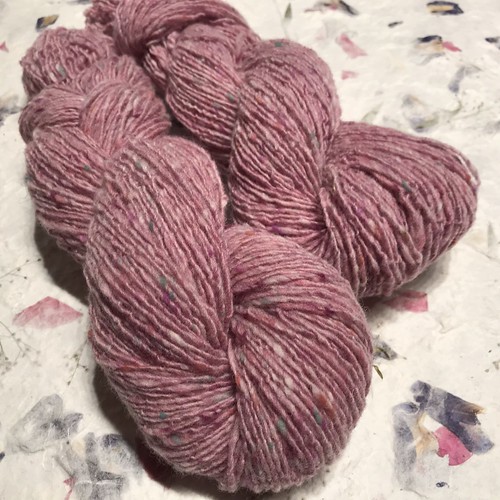
Princess in Training


Inconceivable


As you Wish


True Love

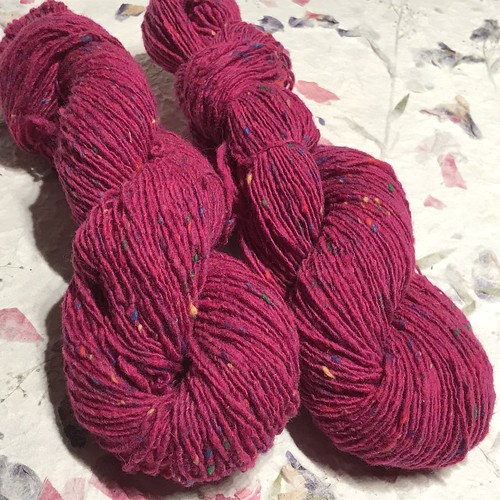
Have Fun Storming the Castle

 |

Heather. 2 left
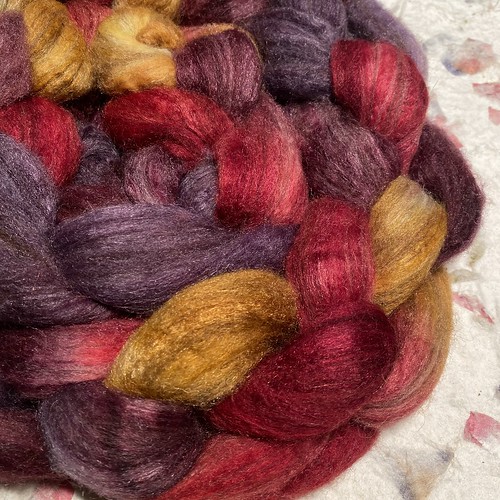
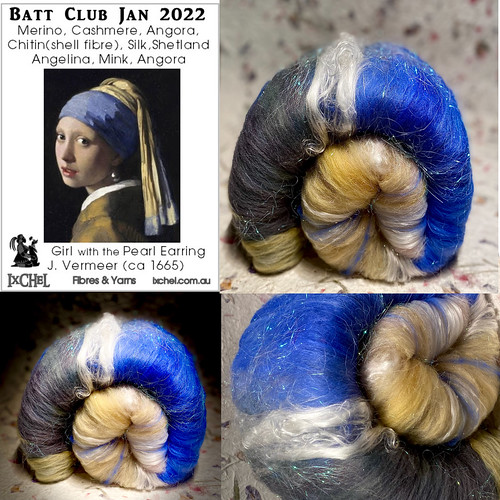 January 2022 Batt Club
January 2022 Batt Club
 January 2022 Fibre club
January 2022 Fibre club
 January 2022 Yarn Club
January 2022 Yarn Club
 June 2021Club
June 2021Club

 June 2021Club
June 2021Club
 November 21 Yarn Club
November 21 Yarn Club
Note to all International club members:
All international club parcels are now being shipped with tracking and expedited.
There is an option if you want all three of your clubs to be shipped together to save on shipping cost: Just ask me for a postage quote !
50+grams (+/-1.75Oz) +/- 200meters AU$16
 |

A Highland Fling. 4 left

 |

Rosy Future. 3 left
All my contact details and "HOW TO ORDER" : email or message me on facebook, Ravelry or Instagram, quoting the colourway and the quantity you would like, together with your postal address and I will get right back to you with all the payment details. And, please remember: Every time you buy from a small business or a farm you are not only getting something unique and handmade but you are supporting so much more !
IxCHeL club sign ups for
Juy, August & September 2022
are now open !
Here are some photos of the previous clubs:
 January 2022 Batt Club
January 2022 Batt Club January 2022 Fibre club
January 2022 Fibre club January 2022 Yarn Club
January 2022 Yarn Club June 2021Club
June 2021Club
 June 2021Club
June 2021Club November 21 Yarn Club
November 21 Yarn ClubNote to all International club members:
All international club parcels are now being shipped with tracking and expedited.
There is an option if you want all three of your clubs to be shipped together to save on shipping cost: Just ask me for a postage quote !
IxCHeL Fibre Club Juy, August & September 2022
The subscription is for a period of three months and you will receive one special hand dyed and special blended top/roving per month
All the tops will be hand dyed and will be especially made for the members of IxCHeL Fibre Club ! Price to join the IxCHeL Fibre Club #52 and receive your special hand dyed top :)) for three months (Juy, August & September 2022) is AU$78 + postage (parcel post or airmail). AND there are good value double and triple serves available !!!
For Australia : single serve $78+$30 postage (parcel post), double serve $150(save $6) +$30m postage or triple serves $225 (save $9!) + $30 postage
For New Zealand : single serve $78+$45 postage (parcel post) double serve $150(save $6) +$45 postage
For New Zealand : single serve $78+$45 postage (parcel post) double serve $150(save $6) +$45 postage
For USA + Canada: single serve AU$78+AU$60 (Airmail) double serve AU$150+AU$60; triple serve $225 (save $9) + AU$60postage
For UK,Europe, rest of the world: Single serve AU$78+AU$78 (airmail) Double serve AU$150+AU$78; triple serve $225 (save $9) + AU$78postage
For Asia: Single serve AU$78+AU$57 (airmail) Double serve AU$150+AU$57; triple serves $225 (save $9) + AU$57postage
If you want to receive a fibre surprise every month then join the IXCHEL FIBRE CLUB #52 now. Numbers are strictly limited ! Payment via direct deposit or credit card or paypal. Just PM or email me your details.
The IxCHeL Yarn Clubs Juy, August & September 2022
Every month for three months (Juy, August & September 2022) you will receive: enough hand dyed luscious yummy yarn to make a pair of socks or a lush shawl or scarf of course! (the hand dyed yarn will be exclusive for the Ixchelbunny SOCK-IT-TO-ME Yarn CLUB and will range from a sock weight yarn (a 4ply/fingering weight yarn); Every month a sock or scarf pattern, tips and instructions ! Now is that GOOD or is that GOOD ??!
I will even offer a double serve for those of you who like their socks or scarves extra long !
For Australia : single serve $96+$30 postage (parcel post) double serve $177( save $15!!) +$30 postage
For New Zealand : single serve $96+$45 postage (parcel post) double serve $177( save $15!!) +$45 postage
For USA + Canada: single serve AU$96+AU$60 (Airmail) double serve $177 (Save $15!!) +AU$60
For New Zealand : single serve $96+$45 postage (parcel post) double serve $177( save $15!!) +$45 postage
For USA + Canada: single serve AU$96+AU$60 (Airmail) double serve $177 (Save $15!!) +AU$60
For UK,Europe, rest of the world: Single serve AU$96+AU$78 (airmail) Double serve $177 (Save $15!!) +AU$78
For Asia: Single serve AU$96+AU$57 (airmail) Double serve $177 (= Save $15!!!) +AU$57
Numbers are strictly limited !
Payment via direct deposit or credit card or paypal . Just PM or email me your details
By the way: you don’t HAVE to knit socks if you don’t want to.. the hand dyed yarn is amazingly nice for scarves, cowls, beanies and even tops ! Anything goes Payment via direct deposit or credit card or paypal. Just PM or email me your details
IxCHeL Funky Bunny Batt Clubs Juy, August & September 2022
Here are all the details. Just pm me when you have any questions or want to be part of the funky bunny batt club Movement ;-) Welcome to the blingy dark side ;-D
The subscription is for a period of three months and you will receive one special hand dyed funky bunny batt per month to the value of AU$40 or more .
The batts will range in weight from 140grams to 170grams with luxury fibres like camel , angora, cashmere, silk, yak, llama even wallaby and bison, and rare breeds !!!! All the batts will be hand dyed and will be especially made for the members of IxCHeL funky bunny Club ! Every month you will receive a HUGE luxury funky bunny batt !
Sign up now and you will receive an IxCHeL Hand dyed , super luxurious funky bunny batt for Juy, August & September 2022
Price to join the IxCHeL Funky bunny for three months is :
For Australia : $114+$30 postage (parcel post)
For New Zealand : single serve $114+$45 postage (parcel post)
For USA + Canada: AU$114+AU$60 (Airmail)
For New Zealand : single serve $114+$45 postage (parcel post)
For USA + Canada: AU$114+AU$60 (Airmail)
For UK,Europe, rest of the world: AU$114+AU$78 (airmail)
For Asia: AU$114+AU$57 (airmail)
If you want to receive a fibre surprise every month then join the IXCHEL FUNKY BUNNY BATT CLUB now.
Numbers are strictly limited !
Payment via direct deposit or credit card or paypal. Just PM or email me your details.
To become a member just email me on ixchelbunnyart at gmail dot com or message me on facebook or Instagram. More on how to order the clubs and anything from this update later in the blog in the section “how to order”
Princess Bride Tweed Yarn
Black Superfine Merino, Super soft Lambswool Tweed 4 ply yarn with little pops of colour
50+grams (+/-1.75Oz) +/- 200meters AU$16


Princess in Training


Inconceivable


As you Wish


True Love


Have Fun Storming the Castle

a gorgeous colourwork jumper with
"have fun storming the castle" and "Kingfisher" mohair tweed yarn
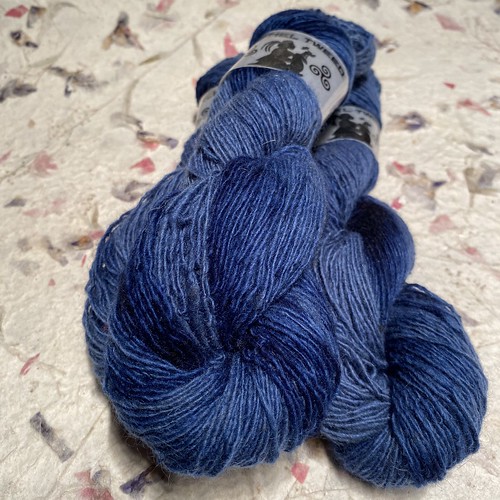






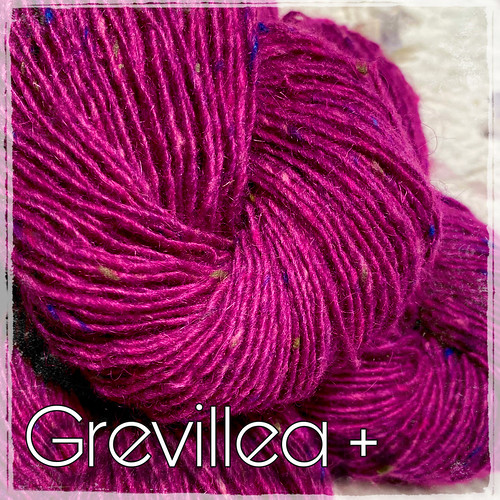

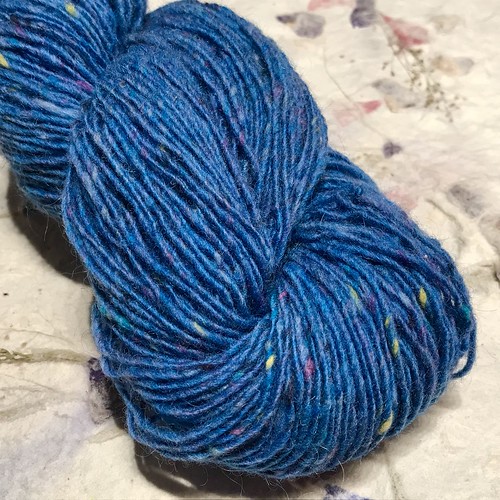
To order: email or message me on facebook, Ravelry or Instagram, quoting the colourway and the quantity you would like, together with your postal address and I will get right back to you with all the payment details. Lock down or not: I am still working and mailing the parcels out fast as humanly possible :-)
IxCHeL Tweed Yarn
Hand dyed
Super soft lambs wool 70% and Kid Mohair 30%
Spun singles, fingering or sock weight yarn
+/- 200meters/218yards
50grams 1.76oz
AU$18


Indigo 1 available


Jewels 2 available
IxCHeL Tweed Yarn
Super soft lambs wool 70% and Kid Mohair 30%
Spun singles, fingering or sock weight yarn
+/- 200meters/218yards
50grams 1.76oz
AU$16


Nephrite Jade
(A beautiful deep sage green colour with fun blue, lime and salmon speckles)


Grevillea +
A vibrant raspberry pink tweed with deep purple, lime and soft pink speckles)


Great Barrier Reef




Leafy Seadragon




Flying Fox




Airlie Beach




Sea Mist





Amethyst


 Kata Tjuta BACK IN STOCK !!!
Kata Tjuta BACK IN STOCK !!!
(an intense pure red that goes well with the Kookaburra and the Wattle and the Amethyst colourway and soooooo many others)

 Kookaburra
Kookaburra
(a beautiful silver grey with ochre accents that complement the dingo colourway)

 Dingo
Dingo
( A beautiful warm honey ochre with pops of royal bluebell, kingfisher and kangaroo paw)

 Dusky Grevillea
Dusky Grevillea
(a gorgeous raspberry base with pops of royal bluebell, flowering gum, grey and daintree)


 Fern Forest
Fern Forest
( a deep forest green with accents of bright red, dusky purple and daintree) )

 Jacarandah
Jacarandah
( a fabulous deep purple with accents of royal bluebell, daintree, grevillea and kingfisher )

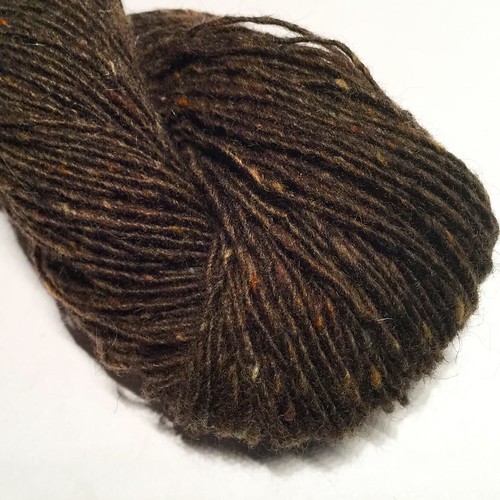 Wombat
Wombat
( a fabulous deep walnut brown with accents of dingo and kookaburra)

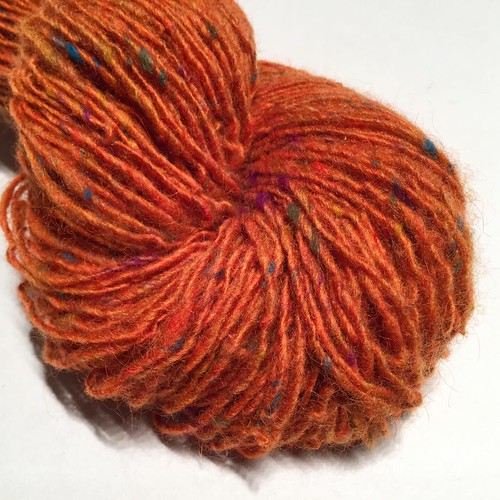 Kangaroo Paw
Kangaroo Paw
( a fabulous warm orange with accents of fern forest, royal bluebell and grevillea and dingo )


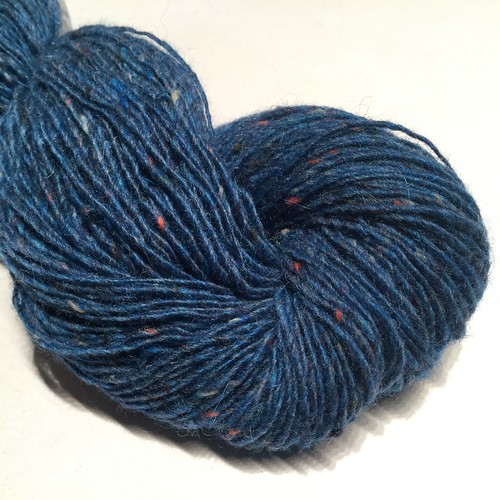 Royal Bluebell
Royal Bluebell
( a deep blue with accents of flowering gum, kookaburra and fern forest )

 Wallaby
Wallaby
( a warm light brown with accents of soft blue and kookaburra)

 Daintree ( a soft green with accents of fern forest and dingo)
Daintree ( a soft green with accents of fern forest and dingo)
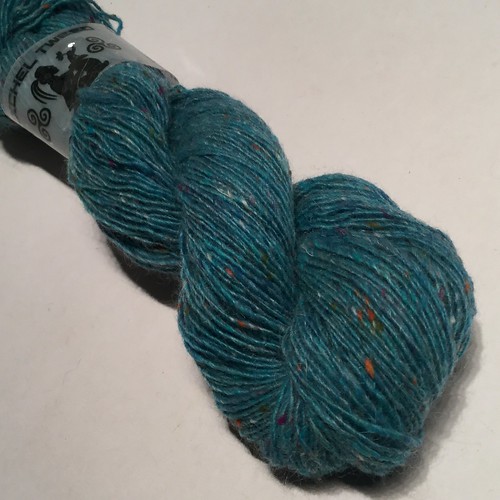
 Kingfisher
Kingfisher
( a fabulous Turquoise blue with accents of fern forest, kangaroo paw, Jacaranda and Grevillea)

Want to dye your own with easy to use acid dyes? I have been selling these Landscape dyes at my workshops and shows for a long time : They are extremely easy to use and come in great shades.

Wattle
(A beautiful sunshine yellow that goes so well with the kookaburra the silver grey)
(A beautiful sunshine yellow that goes so well with the kookaburra the silver grey)

 Kata Tjuta BACK IN STOCK !!!
Kata Tjuta BACK IN STOCK !!!(an intense pure red that goes well with the Kookaburra and the Wattle and the Amethyst colourway and soooooo many others)

 Kookaburra
Kookaburra(a beautiful silver grey with ochre accents that complement the dingo colourway)

 Dingo
Dingo( A beautiful warm honey ochre with pops of royal bluebell, kingfisher and kangaroo paw)

 Dusky Grevillea
Dusky Grevillea(a gorgeous raspberry base with pops of royal bluebell, flowering gum, grey and daintree)

Flowering Gum
( a gorgeous medieval warm red with bright red, kookaburra and fern forest accents)
( a gorgeous medieval warm red with bright red, kookaburra and fern forest accents)

 Fern Forest
Fern Forest ( a deep forest green with accents of bright red, dusky purple and daintree) )

 Jacarandah
Jacarandah ( a fabulous deep purple with accents of royal bluebell, daintree, grevillea and kingfisher )

 Wombat
Wombat( a fabulous deep walnut brown with accents of dingo and kookaburra)

 Kangaroo Paw
Kangaroo Paw ( a fabulous warm orange with accents of fern forest, royal bluebell and grevillea and dingo )

isn’t it gorgeous how the Kangaroo paw knits up?! )

 Royal Bluebell
Royal Bluebell ( a deep blue with accents of flowering gum, kookaburra and fern forest )

 Wallaby
Wallaby( a warm light brown with accents of soft blue and kookaburra)

 Daintree ( a soft green with accents of fern forest and dingo)
Daintree ( a soft green with accents of fern forest and dingo)
 Kingfisher
Kingfisher ( a fabulous Turquoise blue with accents of fern forest, kangaroo paw, Jacaranda and Grevillea)
Landscape dyes

100g tubs AU$12
250 g tubs AU$27
250 g tubs AU$27
Just contact me with the name of the colour you are after and I will get right back to you.
All my contact details are here:
Please don't hesitate to contact me at any time if you have any questions okay? Always happy to enable. All my contact details are to be found at the end of this week’s blog entry.
Have a fun weekend !!!
Have a fun weekend !!!
How To Order:
1. You can email me on ixchelbunnyart at gmail dot com or ixchelbunny at yahoo dot com dot au
2. Message me on facebook or
3. Message me on www.ravelry.com where I am ixchelbunny.
4. message me on Instagram where I am @ixchelbunny
I will email you right back with all your order details and payment methods.
Any questions? Any custom orders for yarn or dyeing fibre? : Please don’t hesitate to ask! Always happy to enable.
2. Message me on facebook or
3. Message me on www.ravelry.com where I am ixchelbunny.
4. message me on Instagram where I am @ixchelbunny
I will email you right back with all your order details and payment methods.
Any questions? Any custom orders for yarn or dyeing fibre? : Please don’t hesitate to ask! Always happy to enable.
Keep your eyes out for any news on the
ixchelbunny Instagram feed and the IxCHeL facebook page!!
Show the Love and Follow me on Instagram
RABBIT ON !
((hugs))
Charly




No comments:
Post a Comment